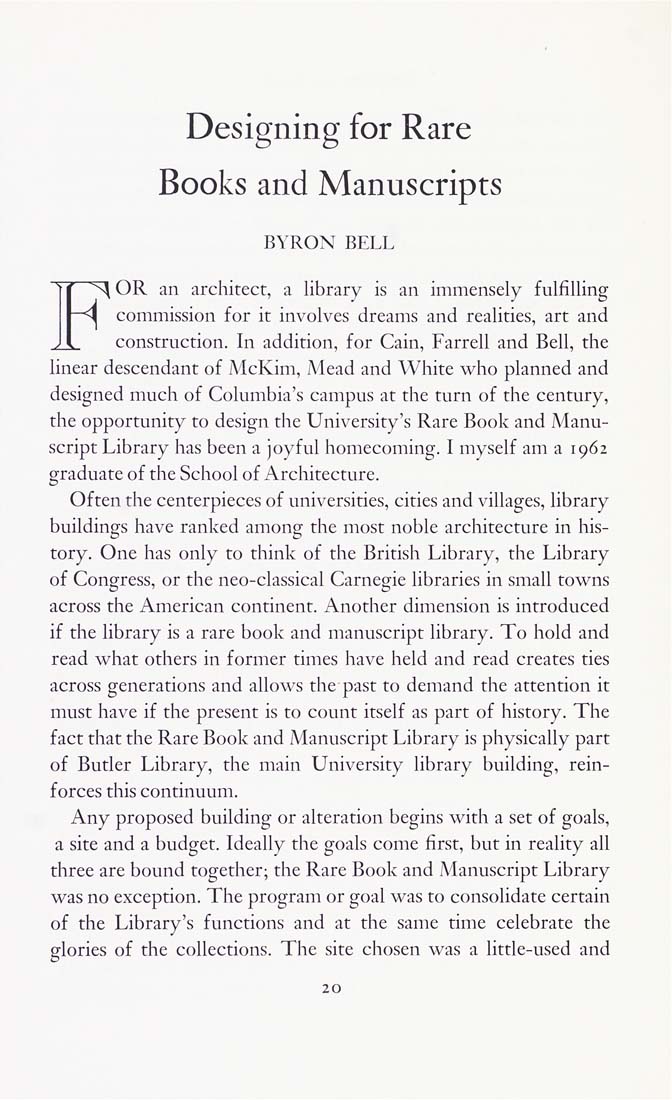Columbia Library columns (v.34(1984Nov-1985May))
(New York : Friends of the Columbia Libraries. )
|
||
|
|
|
|
| v.34,no.2(1985:Feb): Page 20 |

F Designing for Rare Books and Manuscripts BYRON BELL ^ OR an architect, a library is an immensely fulfilling commission for it involves dreams and realities, art and construction. In addition, for Cain, FarreU and Bell, the linear descendant of McKim, A'lead and White who planned and designed much of Columbia's campus at the turn of the century, the opportunity to design the University's Rare Book and Alanu¬ script Library has been a joyful homecoming. I myself am a 1962 graduate of the School of Architecture. Often the centerpieces of universities, cities and villages, library buildings have ranked among the most noble architecture in his¬ tory. One has only to think of the British Library, the Library of Congress, or the neo-classical Carnegie libraries in small towns across the American continent. Another dimension is introduced if the library is a rare book and manuscript library. To hold and read what others in former times have held and read creates ties across generations and allows the past to demand the attention it must have if the present is to count itself as part of history. The fact that the Rare Book and Manuscript Library is physically part of Butler Library, the main University library building, rein¬ forces this continuum. Any proposed building or alteration begins with a set of goals, a site and a budget. Ideally the goals come first, but in reality all three are bound together; the Rare Book and Manuscript Library was no exception. The program or goal was to consolidate certain of the Library's functions and at the same time celebrate the glories of the collections. The site chosen was a little-used and |
| v.34,no.2(1985:Feb): Page 20 |







